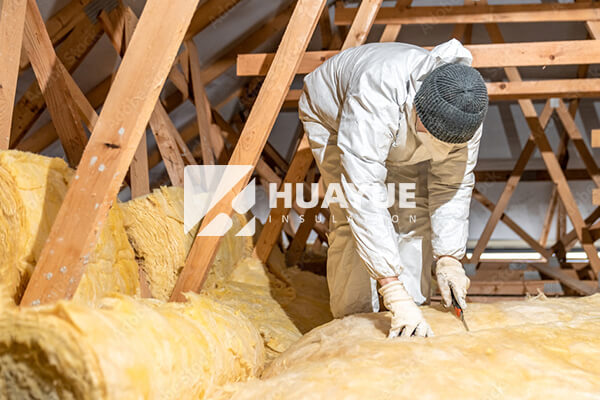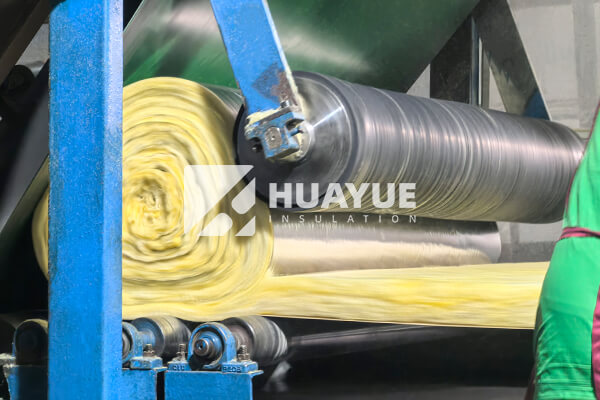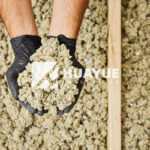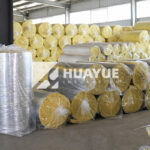Does mold grow on fiberglass insulation?
Every property owner worries about mold in hidden places—one spot you might not think of is inside walls behind insulation.
Fiberglass insulation itself does not support mold growth because it is inorganic, but mold can grow on dust or debris that accumulates on it, especially if moisture is present.

If you are responsible for building maintenance or renovation, mold and insulation often come up together. Some people believe fiberglass insulation is mold-proof, but water and dirt can change the story. Next, let me explain how this happens, what you can do, and answer your biggest questions about fiberglass insulation and mold.
How to remove mold from fiberglass insulation?
When you see black or green spots on fiberglass insulation, it can feel alarming. Mold is not only unsightly—it’s harmful to health and property.
To remove mold from fiberglass insulation, you must first find the moisture source and fix it. Next, remove and safely discard the moldy insulation because cleaning it is not effective or recommended.

In my experience, once mold appears on insulation, it will keep coming back unless you remove and replace the affected material. Fiberglass fibers don’t feed mold, but anything organic trapped in the insulation, like dust, creates a breeding ground if moisture gets in. I usually wear gloves, goggles, and a mask during removal. Sealing the area prevents spores from spreading. Afterward, I check for leaks or condensation on nearby pipes or walls, which is often the root of the problem. Professional disposal is important, as moldy insulation can release more spores if disturbed too much.
Here is a step-by-step guide to removing moldy fiberglass insulation:
| Step | Action |
|---|---|
| 1. Identify the Source | Look for leaks, condensation, or recent water damage. |
| 2. Wear Protection | Use gloves, safety glasses, and a respirator or dust mask. |
| 3. Isolate the Area | Close doors, use plastic sheeting to contain spread. |
| 4. Remove Insulation | Carefully bag and seal moldy insulation for proper disposal. |
| 5. Clean Surfaces | Clean surrounding surfaces with a mold-killing cleaner. |
| 6. Fix Moisture Issue | Repair leaks or add a vapor barrier before new insulation. |
Will fiberglass insulation get moldy?
Sometimes I get asked, “Will fiberglass insulation get moldy at all?” It is a simple question with an answer that is not always clear.
Fiberglass insulation can develop mold if exposed to moisture and organic contaminants. While fiberglass itself does not feed mold, wet or dirty insulation provides the conditions mold needs to grow.

In my projects, I often stress the difference between fiberglass the material and the finished product once installed. New, clean fiberglass off the production line is not a food source for mold. However, dust or organic matter settling on the insulation over time can provide nutrients for mold. If a pipe leaks or the wall has condensation, this creates a moist environment. Mold can then take root on the dust and debris even if the fiberglass mat appears unharmed. In older buildings, I have seen insulation that looks fine on first glance but is hiding mold where water entered from outside or plumbing. This teaches me to always look for water sources and inspect insulation during routine maintenance.
Key factors affecting mold growth in fiberglass insulation:
| Factor | Mold Growth Risk |
|---|---|
| Moisture | High |
| Cleanliness | Low if clean |
| Dust/Debris | High if present |
| Ventilation | Lower with good airflow |
| Temperature | Mold likes warmth |
Should moldy insulation be removed?
When someone discovers moldy insulation, it is always tempting to try cleaning rather than replacing it. The cost and work of insulation removal seem daunting.
Yes, moldy insulation should always be removed and replaced. Cleaning is rarely effective, as mold spores penetrate the fibers and pose ongoing health risks.
I learned from both reading and hands-on jobs that when insulation gets moldy, the safest approach is to take it out completely. Moldy insulation will continue to release spores even if cleaned on the surface. These spores can trigger allergies or respiratory issues for workers and building occupants. Whenever I have cut corners on this, I ended up returning to fix the same problem later, costing more in the long run. Professionals always recommend removing and safely disposing of moldy fiberglass and addressing the moisture issue, so the new insulation stays mold-free.
Reasons moldy insulation should be removed:
| Reason | Explanation |
|---|---|
| Spores Penetrate Fibers | Cleaning cannot reach hidden spores inside insulation. |
| Health Risks | Mold can trigger allergies and breathing problems. |
| Recurring Problems | Mold may return if not completely removed. |
| Structural Damage | Persistent moisture can damage walls, wood, and pipes. |
What is the biggest problem with fiberglass insulation?
Even though fiberglass insulation is a top choice for many buildings, it comes with specific risks and downsides.
The biggest problem with fiberglass insulation is its vulnerability to moisture. When wet, it loses its thermal performance and can become a breeding ground for mold on accumulated dust.
I see this issue most in humid or leaky areas. Once fiberglass gets wet, it packs down, loses its air pockets, and will not insulate like before. It may look dry on the surface but still be damp inside, allowing hidden mold to grow. Water damage often means you have to replace large sections of insulation, increasing costs. Some alternatives have better water resistance, but they may be more expensive or harder to install. Knowing this helps me educate clients and plan maintenance checks around pipes, windows, and roofs to stop water before it reaches the insulation.
Comparison of fiberglass insulation to other common insulation materials:
| Insulation Type | Moisture Resistance | Mold Risk | Thermal Stability | Cost |
|---|---|---|---|---|
| Fiberglass | Low | Medium | Good | Low |
| Foam Glass | High | Very Low | Excellent | Higher |
| Rock Wool | Medium | Low | Excellent | Medium |
| Rubber Foam | High | Very Low | Good | Higher |
Conclusion
Mold does not grow directly on fiberglass, but water and dirt change the risk. Always remove moldy insulation, fix leaks, and use the right material for safer, longer-lasting results.
You may also be interested in:
Ready to Get Started?
Get in touch with our experts for personalized solutions tailored to your needs.
Get Free QuoteLatest Articles


What Does Density Mean for Rock Wool Insulation?
Nov 25, 2025
Let's Work Together
Ready to take your business to the next level? Get in touch with our team of experts and let's discuss how we can help you achieve your goals.
Get Free Solutions





